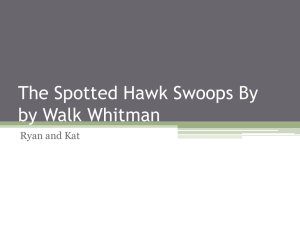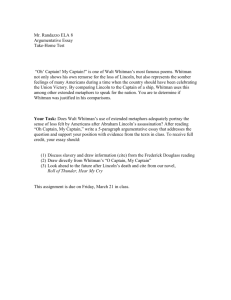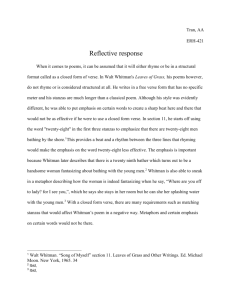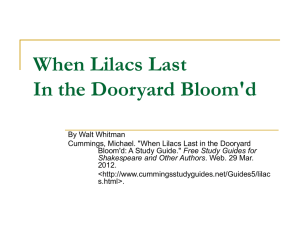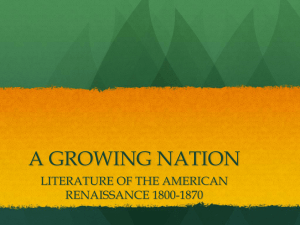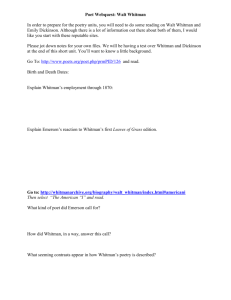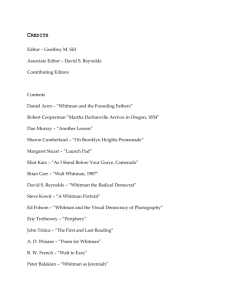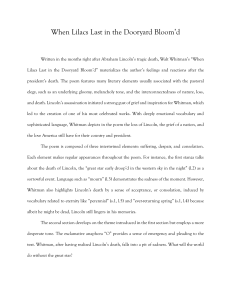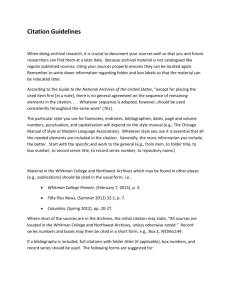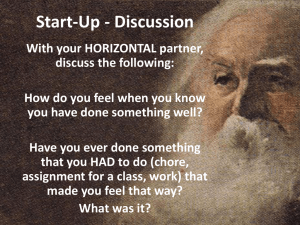“When Lilacs Last in the Dooryard Bloom`d”
advertisement
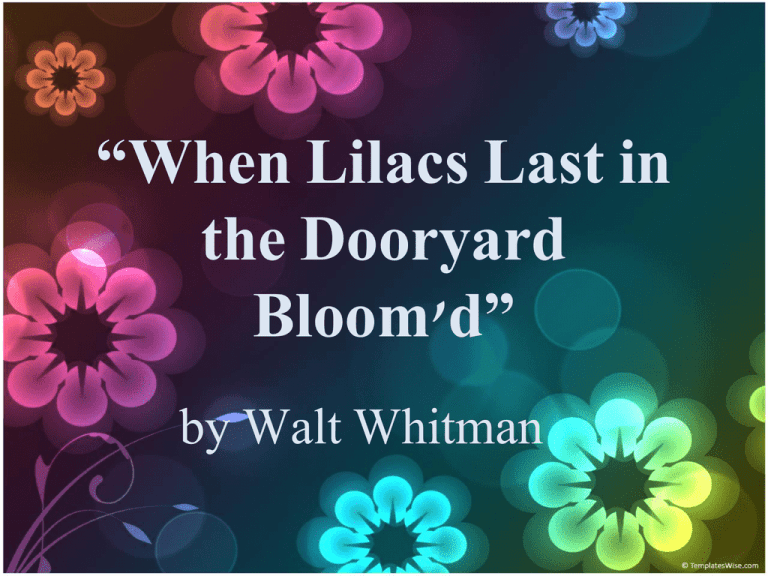
“When Lilacs Last in the Dooryard Bloom'd” by Walt Whitman Ode to Lincoln • On April 14, 1865, Abraham Lincoln was assassinated, marking one of the most tragic occurrences in our nation’s history at the close of our greatest war • The war left 600,000 men dead and 4 times that amount wounded • In the poem. Whitman not only mourns the loss of one of our greatest leaders, but also the loss of a nation Poetic Justice • Whitman attempts to use his poetic genius to provide an elegy for the dead as well as the living, and ultimately, provide closure and hope Transcendental Symbols • Three symbols: • Lilacs (flowers of spring, rebirth); • the great star (really a planet, Venus, but Lincoln as eternal); • the solitary thrush (bird-poet, Whitman). Weaving • The poem transforms grief into hope by weaving together these three symbols on a ‘field’. The weaving together of these three symbols is a symbol in itself, symbolic of a nation picking up its broken remains and rebuilding itself into a stronger union Symbols in Action • The lilac--Whitman breaks off a sprig of lilac, and as the funeral procession passes through the nation, he drops it on the passing coffin. • The great star--It has "dropt in the night," leaving us in darkness and despair, but it will return eternally each spring in the heavens. The essential question is, however: what do we do now? • The solitary thrush--Central to the transformation is the thrush, who sings "Death's outlet song of life." Whitman finishes weaving together the symbols-"To the tally of my soul,/Loud and strong kept up the gray-brown bird,/With pure deliberate notes spreading filling the night." The song produces "panoramas of visions" for Whitman, and it is here, at this moment in the poem, that a key revelation is made: "And I saw askant the armies." One of the greatest poems in the English language • Whitman envisions the traumatic nature of grief and the despair of loss as felt by the living, as he moves from Lincoln to the entire nation: "I saw battle-corpses, myriads of them/. . .But I saw they were not as was thought,/They themselves were fully at rest, they suffer'd not,/The living remain'd and suffer'd, the mother suffer''d. . . ." • This resolution allows for passage on, for hope and renewal: "Passing the visions, passing the night," as he leaves "the knowledge of death, and "the thought of death" behind. Mourning given poetic utterance dissolves despair, and we move on. . .the living. "Lilac and star and bird twined with the chant of my soul, There in the fragrant pines and the cedars dusk and dim." Journal #7 (200 word minimum in small-groups) Collectively, much like after our country battled through the loss of Lincoln and the Civil War, there is a task at hand that constitutes people working together to achieve a common goal. Also, similar to our country, there are things that must be woven together, or work in unison, to achieve that goal. In a well-thought out journal, what three things must be woven together in order for your group to successfully achieve any given task? Why did you choose those three things? How will you weave those things together so that they bond to work in unison? Explain your assertions.
